Discover Lahiri Mahasaya Home in Bengali Tola, Varanasi
There’s something about Varanasi that makes you believe in magical things like destiny and chance. But in Varanasi, when these things happen, they don’t feel magical. They feel completely normal. Varanasi was actually Benares (also known as Banares, Kashi, or Kasi). Varanasi also famous as home of Lahiri Mahasaya among kriya Yogis aspirants.
Searching for Lahiri Mahasaya Home in Varanasi and Samadhi
When I first realized that Varanasi was Benares, the historical city mentioned in Paramahansa Yogananda’s “Autobiography of a Yogi,” I also learned that there was a temple dedicated to Lahiri Mahasaya and his guru, Mahavatar Babaji. This temple is known as the Lahiri Mahasaya Samādhi—a shrine honoring the yogi.
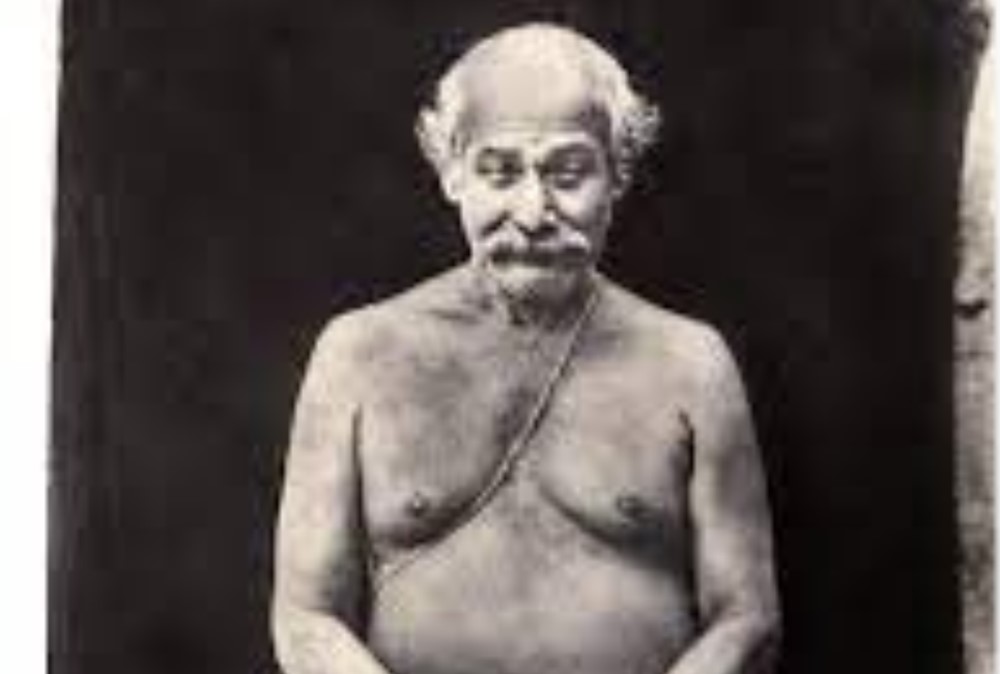
Lahiri Mahasaya Temple
Finding the temple, however, wasn’t straightforward. The Lahiri Mahasaya Temple location on Google Maps was incorrect, and it took us about an hour of wandering to locate it. When we finally arrived, I realized that this was not the temple itself but Lahiri Mahasaya Home in Varanasi
Something like this happened to us when we visited Lahiri Mahasaya Home in Varanasi We were walking near the ghats, heading to the Bengali Tola Mohalla , when we noticed an old house with a wooden door. The door was locked, and there was a nameplate that said “B. Lahiry” on it.( Lahiri Mahasaya Home in Varanasi )
Lahiri Mahasaya house in Varanasi ( Google Map Location ) only opens once a year, on Guru Purnima—the full moon celebration honoring spiritual teachers, typically falling between June and July.

Bengali Tola: Home of Lahiri Mahasaya
One of the most famous landmarks in Bengali Tola is Durga Bari, also known as the Mukherjee House. The Mukherjee family came to Varanasi from Janai, West Bengal, in 1767, and today, their descendants—the 9th generation—still live there.
Durga Bari
Durga Bari houses an ancient statue of Goddess Durga, which is nearly 249 years old. What’s amazing about this statue is that it has never been immersed in the river, a tradition typically followed after Durga Puja. Legend has it that whenever the family attempted to immerse the statue, it simply wouldn’t move.
This miracle happened because, 249 years ago, Maa Durga appeared in a dream to the head of the Mukherjee family. She expressed her wish to stay in their Durga Mandir and not be immersed. Since then, the family has continued to worship her statue, adorning it with new colors and costumes every Navaratri.
Lahiri Mahasaya Home
Along with the Durga temple, there’s also Bengali Tola Mohalla famous for Lahiri Mahasaya Home, making this home not just a residence but a sacred place of worship for the entire Kriya Yogi community in the world.
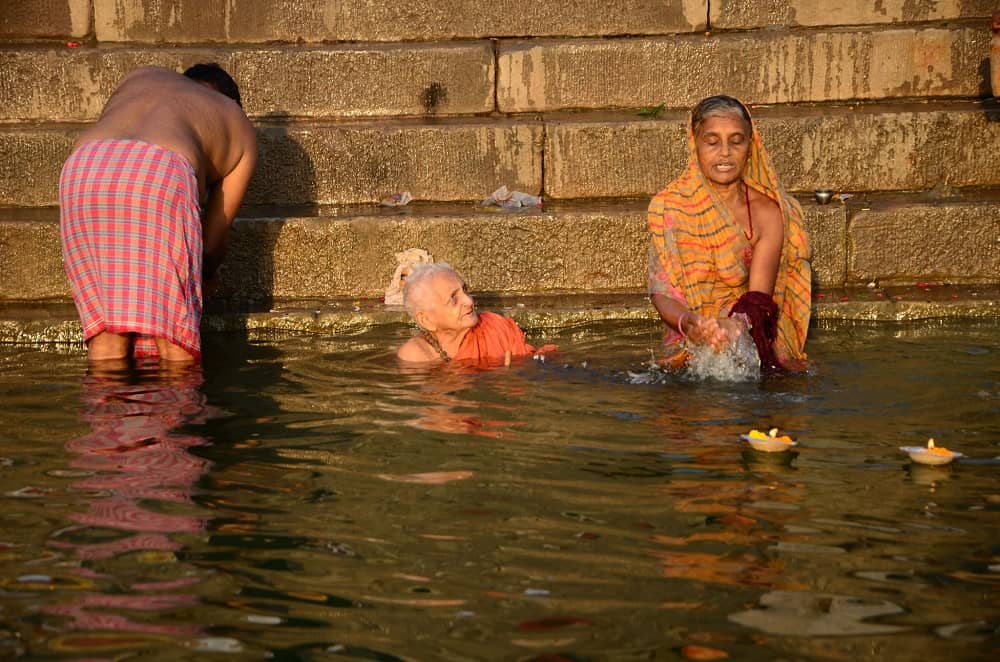
Varanasi
In the meantime, we explored the magical city of Varanasi. We wandered along the ghats, took in the mesmerizing Ganga aarti at the Dashashwamedh Ghat, and soaked in the profound spiritual energy that permeates the air.
In Varanasi, there are thousands of temples and at least 84 bathing ghats. These ghats are stairs leading down to the Ganges River, where people come to take a holy dip. Hindus believe that bathing in the Ganges washes away all sins and purifies the soul.
The city is also known for its burning ghats, where cremations take place. After a body is cremated, the ashes are placed in the river. Hindus believe that if someone’s ashes are laid in the Ganges, they can attain salvation, freeing them from the cycle of rebirth.
Lahiri Mahasaya
Lahiri Mahasaya, born in 1828, was a great Indian yogi who passed away in 1895, just before his 67th birthday. He revived the Kriya Yoga technique under the guidance of his guru, Mahavatar Babaji, and later his descendants continued his teachings. People say he had special, almost magical abilities, and he’s even mentioned in the famous book Autobiography of a Yogi.
Lahiri Mahasaya, the Yogi of Benares
The holy city of Benares ( Lahiri Mahasaya Home in Varanasi ) was home to the great Indian yogi, Lahiri Mahasaya. He was the guru of Yogananda’s parents, and when Yogananda was just a baby, he received a special blessing from Lahiri Mahasaya. Yogananda’s mother recounted:
“My master [Lahiri Mahasaya] seated you on his lap, placing his hand on your forehead to bless you. ‘Little mother, thy son will be a yogi. As a spiritual engine, he will carry many souls to God’s kingdom.’”
Lahiri Mahasaya’s influence was profound for Yogananda. As Yogananda grew, he felt a deep connection with Lahiri Mahasaya, even seeing his picture come to life during meditation. Yogananda wrote:
“His picture had a surpassing influence over my life. In meditation, I would often see his photographic image emerge from its frame and, taking a living form, sit before me.”
Yogananda Meets His Guru in Benares
While living at the Mahamandal hermitage in Benares, under Swami Dyananda’s guidance, Yogananda hoped to further his spiritual journey. His family wasn’t thrilled with him leaving home, but it was during this time in Benares that Yogananda met his true guru, Swami Sri Yukteswar Giri.
Although Sri Yukteswar lived near Kolkata, their fateful meeting took place in the ancient city of Benares. Sri Yukteswar mentioned:
“My chief hermitage is in Serampore, on Rai Ghat Lane. I am visiting my mother here for only a few days.”
Yogananda marveled at how their meeting had unfolded in Benares, a city so strongly connected to Lahiri Mahasaya. He remarked:
“Serampore is but twelve miles from Calcutta [Kolkata], yet in those regions I had never caught a glimpse of my guru. We had to travel for our meeting to the ancient city of Kasi (Benares), hallowed by memories of Lahiri Mahasaya.”
Sri Yukteswar’s Guru: Lahiri Mahasaya
Later, when Yogananda visited Sri Yukteswar’s hermitage in Serampore, he discovered a portrait of Lahiri Mahasaya, Sri Yukteswar’s guru. Yogananda was awestruck:
“‘Lahiri Mahasaya!’ I exclaimed in surprise. ‘Yes, my divine guru,’ Sri Yukteswar replied, filled with reverence. ‘Greater he was, as man and yogi, than any other teacher whose life came within the range of my investigations.’”
Sri Yukteswar’s Encounter with Babaji in Benares
Sri Yukteswar also had a unique connection with Babaji, Lahiri Mahasaya’s guru. Once, after a brief encounter with Babaji in Serampore, Sri Yukteswar felt hurt when Babaji vanished before he could return with sweets for him and his disciples. Sri Yukteswar resolved not to speak to Babaji next time.
Months later, in Benares, Lahiri Mahasaya greeted Sri Yukteswar and surprised him by saying:
“Welcome, Yukteswar. Did you just meet Babaji at the threshold of my room?”
Sri Yukteswar hadn’t seen Babaji, but Lahiri Mahasaya touched his forehead, and suddenly Sri Yukteswar beheld Babaji. However, he remembered his past hurt and didn’t bow.
Babaji, with kindness and wisdom, playfully said:
“You are annoyed with me… I told you I would see you, but didn’t say how long I would remain. You were full of excitement; I assure you, I was fairly extinguished in the ether by the gust of your restlessness.”
Sri Yukteswar was immediately satisfied by this explanation. Babaji, with celestial words, disappeared into light, leaving behind lessons of meditation and patience.
That was one of Sri Yukteswar’s last visits to Benares to see Lahiri Mahasaya home , yet the impact of these encounters would forever shape the spiritual lineage connecting Lahiri Mahasaya, Sri Yukteswar, and Yogananda.
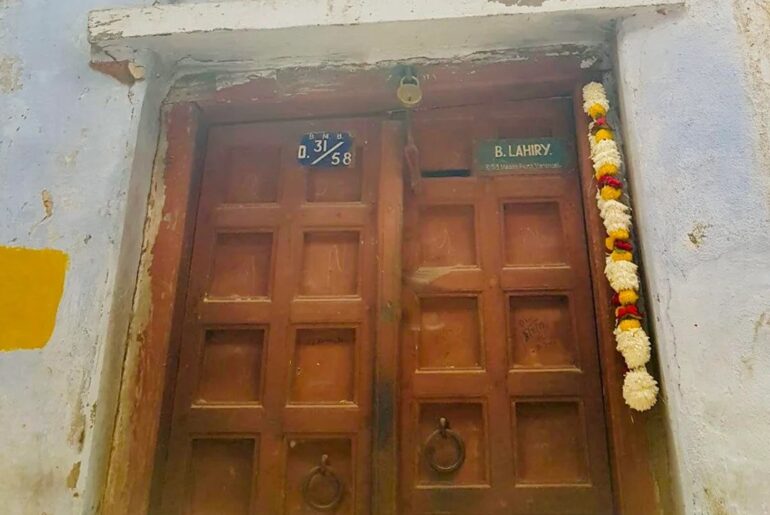
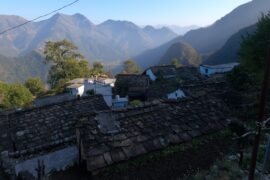
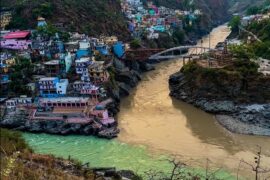
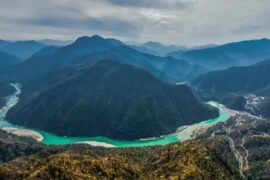
Comments are closed.